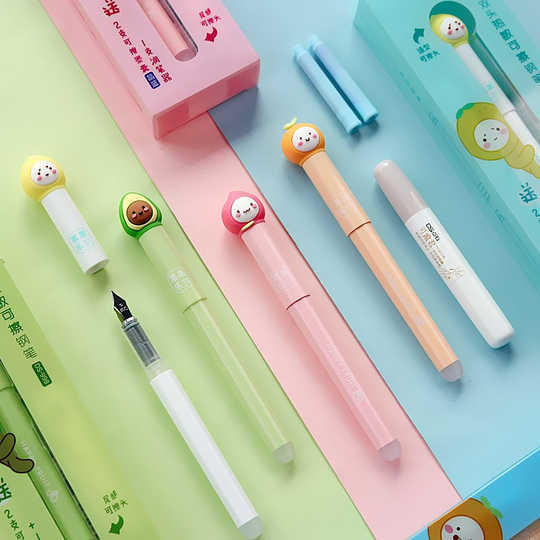So, I've recently been reading some Chinese fountain pen community's review of pens and it's been a hoot. The guides are far more snarky than their English counterparts, probably because in China fountain pens are still an everyday tool and a lot of people are bargain hunting for fountain pens as a student to replace their reliable but expensive disposable rollerballs. There's almost a question a day on ZhiHu (a Quora-esque website in China) along the lines of I'm a student, I need a reliable and cheap fountain pen to replace my rollerballs, halp.
Due to the sheer volume, the replies have gotten very, very snarky. There's even a flow-chart with common attributes to help you select the correct fountain pen.
Anyway, the point is, upon reading these reviews, I found out about Schneider fountain pens. China carries a few of their models that are China only, and I realized South Africa also has quite a bit of Schneider fountain pens in use. However, I've almost never heard of this brand in the U.S./EU pen communities. It's a shame, because it seems like they make cheap pens that work really well.
This leads me to also noticing that the major German fountain pen companies (Pelikan, Lamy, Kaweco, Faber-Castell, Schneider👈just found out about this one) all have replacement nibs for sale, so you can buy a replacement nib should you break the nib on your pen. And it doesn't matter if the pen is $5 or $50 or $500 or $1K+, they clearly expect you to swap nibs in over time as you wear down or break the nibs.
Meanwhile, Japanese fountain pen companies do not bother selling you nib replacements. At first, I thought this was just because their lower end pens are pretty cheap (note: the only German brand cheaper than Japanese brands are the Schneider pens at around $3, whereas the Preppy can go as low as $4.50), but it seems that the higher end pens also fail to provide replacement nibs. The only expensive Japanese pen that sells replacement nibs seems to be the Pilot Vanishing Point/Decimo/Capless (👈these all use the same retracting-style nib). For basically every other pen from Japan, you'll need to purchase a new pen if you want a new nib.
(Edit to add: I have just found out that there are sellers on JD that sell Pilot steel nibs (Kaküno/Metro/Prera line), so at least a small portion of Pilot pens have nib replacements. However, the other two big Japanese fountain pen makers (Platium & Sailor) do not sell replacement nibs, so the general sentiment remains the same.)
Again, this practice is fine when you're using some lower end pens, but, recently, I've purchased a higher end Sailor Pro Gear Slim (and I quite like writing with it), and it's disheartening to think that I have to shell out basically $99 if I ever break the nib and need a replacement. (And that's the grey market price. Ugh.)
If it wasn't because German nibs has a tendency to run thick, I would've stuck to German only. But as it is, I'm using mostly Japanese pens at this point (with one American Franklin-Christoph that is *chef's kiss* so good), since I have small hands and write relatively small, too. Also, I'd like to be able to write in Chinese with my fountain pens and German nibs just don't let me do that.
Anyway, the only thing holding me back from 100% preferring the Japanese pens is the their anti-consumer practice of not selling nibs separately. (And if you're wondering about Chinese pens...that's a whole 'nother can of worms that I'll maybe get into someday.)













